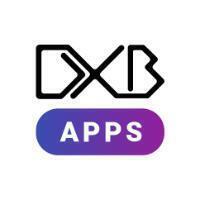Random CPU Spikes in System process
-
Recently Browsing 0 members
- No registered users viewing this page.
-
Posts
-

By Good Bot, Bad Bot · Posted
Kids game on consoles or phones. Maintaining a Windows PC or updating a driver is way beyond a typical young person's skill set. -
By Ccl Ncc · Posted
And its GONE... Says video is private now : ( -
By Aditya Tiwari · Posted
Here are some of the ways you can use Safari's new look on Apple iOS 26 by Aditya Tiwari iPhone's latest software update brings a ton of new features this year and is currently available in beta on supported iPhone models. Its fresh coat of the controversial Liquid Glass is also coming to the Safari web browser, alongside new iPhone wallpapers and a revamped Photos app. In this article, let's talk about the new way you can customize the Safari browser on your iPhone. A major highlight among new Safari features for iOS 26 is the new Compact mode for the Tab Bar. It serves as the default layout on the new iPhone update, available alongside the two other layouts from previous years. Use the new Compact Tab Bar layout in Safari You can follow these steps to customize Tab Bar layouts in Safari: Go to the Settings app on iOS 26. Open the Apps section from the bottom of the screen and scroll down or search to find Safari. You will find the three layout options under the Tabs section: Compact, Bottom, and Top. Tap on Compact to make it default, if it's not already selected. Each Safari layout offers its own set of perks and downsides. The new Compact Mode on Safari does what its name says. Its translucent interface uses much less screen real estate compared to the Bottom and Top layouts. You can find the Back button on the left side of the pill-shaped address bar that doubles up as a search bar. Next to it is a three-dot menu button to access features such as Share, All Tabs, Bookmarks, New Tab, and more. Use Bottom and Top layouts for quicker access to Safari options Bottom and Top layouts are almost the same, except that the latter places the address bar at the top of the screen. While the Top layout might be inconvenient when using an iPhone with one hand, some users may prefer to have their address bar in this position, perhaps for a more symmetrical view. After all, it's original and the only Safari layout available until iOS 15. Apple has given the Liquid Design treatment to both the Bottom and Top layouts, featuring a translucent, floating Tab Bar interface that offers a sneak peek of what's behind. Alongside the options for Bookmarks, Share, and All Tabs, you can find the Forward button to go to the next page in the browser. This is not the case with the Compact mode, but iOS already lets you swipe from the right edge of the screen to go forward. It appears that Apple has made it difficult to use Safari with one hand. It has shifted the New Tab and Tab Groups menu buttons to the top-left corner of the All Tabs page on iOS 26. This is where the Compact mode stands out, as these options are easily accessible. Alternatively, when on the All Tabs page, you can press the tabs pill at the bottom of the screen to access the Tab Groups menu. One thing you'll notice is that the Compact and Bottom tab layouts shrink into a small pill when you scroll down a web page. The pill is translucent, like the Tab Bar, and changes colors according to its background, providing more screen real estate on your iPhone. However, in the Top layout, the address bar collapses into a pill at the top of the screen. You can scroll up on the screen or tap the pill to get back to the whole UI. Apart from that, the Safari 26 beta version for iOS 26 and iPad 26 brings several under-the-hood features to the table. For instance, Apple has added Screen Time support to WKWebView, which powers the browsing experience for in-app browsers. Safari users on iOS, iPadOS, and macOS can also report issues when they have trouble with a web page, accessible via the Page menu on the left of the address bar in all three layouts. The new Safari features and changes are currently being tested through the Apple Developer Program. These features are expected to be available to the public when Apple releases the iOS 26 update later this year. We'll continue to update this article as more beta releases arrive. If you plan to install iOS 26 developer beta, keep in mind that these releases can be unstable, and make sure to back up your data beforehand. -
By Defiantly · Posted
I experienced this in the 80s and 90s and I believe it ultimately set me back. My “computer lab” in grade school and then again in high school in the 90’s had all macs. Then I hit the workforce. Windows and Office were foreign to me. I can see Apple excelling in the creative space but not in the mainstream office. This isn’t a knock on Apple, but more a reality that’s concerning in the context of this article. ….just my experience and opinion -
By Worker Software · Posted
Is this the non-subscription version? Can I move the license to a a new PC later on?
-
-
Recent Achievements
-
 DXB APPS earned a badge
DXB APPS earned a badge
Week One Done
-
 DecaffKnight94 earned a badge
DecaffKnight94 earned a badge
One Month Later
-
S.P earned a badge
Dedicated
-
adxnksd42031 earned a badge
One Month Later
-
aphanic went up a rank
Rising Star
-
-
Popular Contributors
-
Tell a friend









Recommended Posts